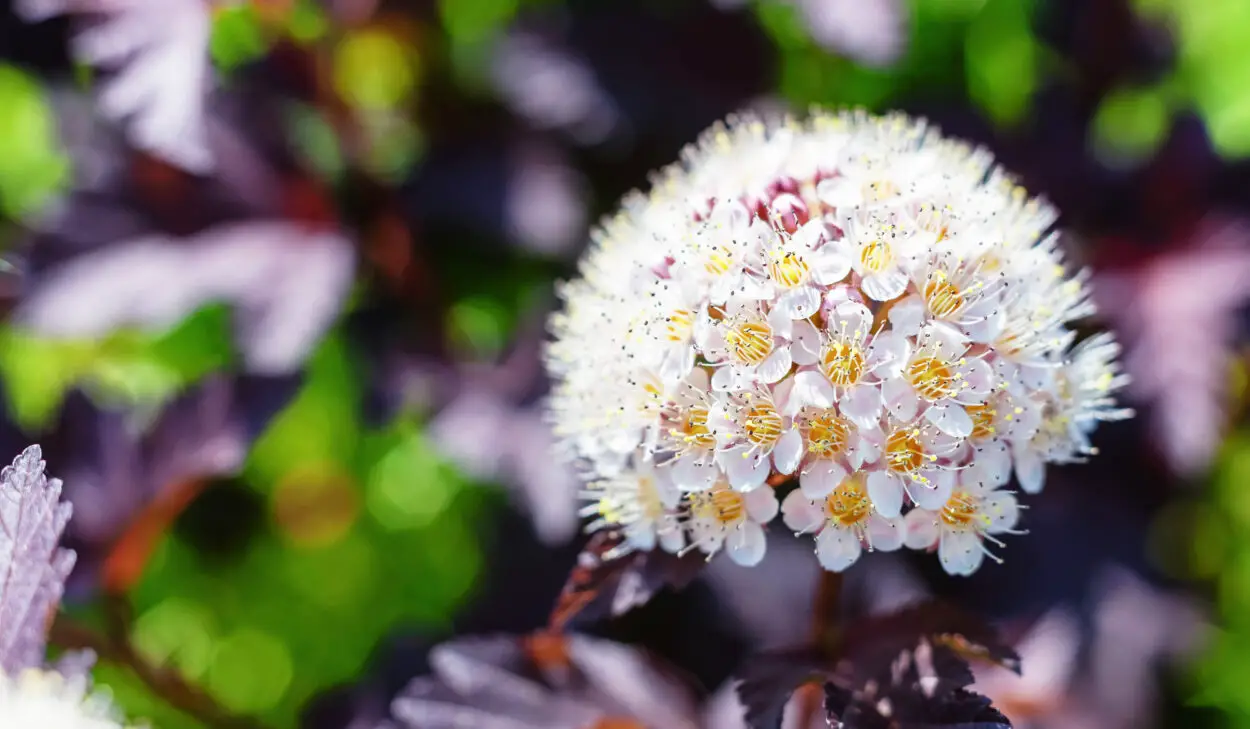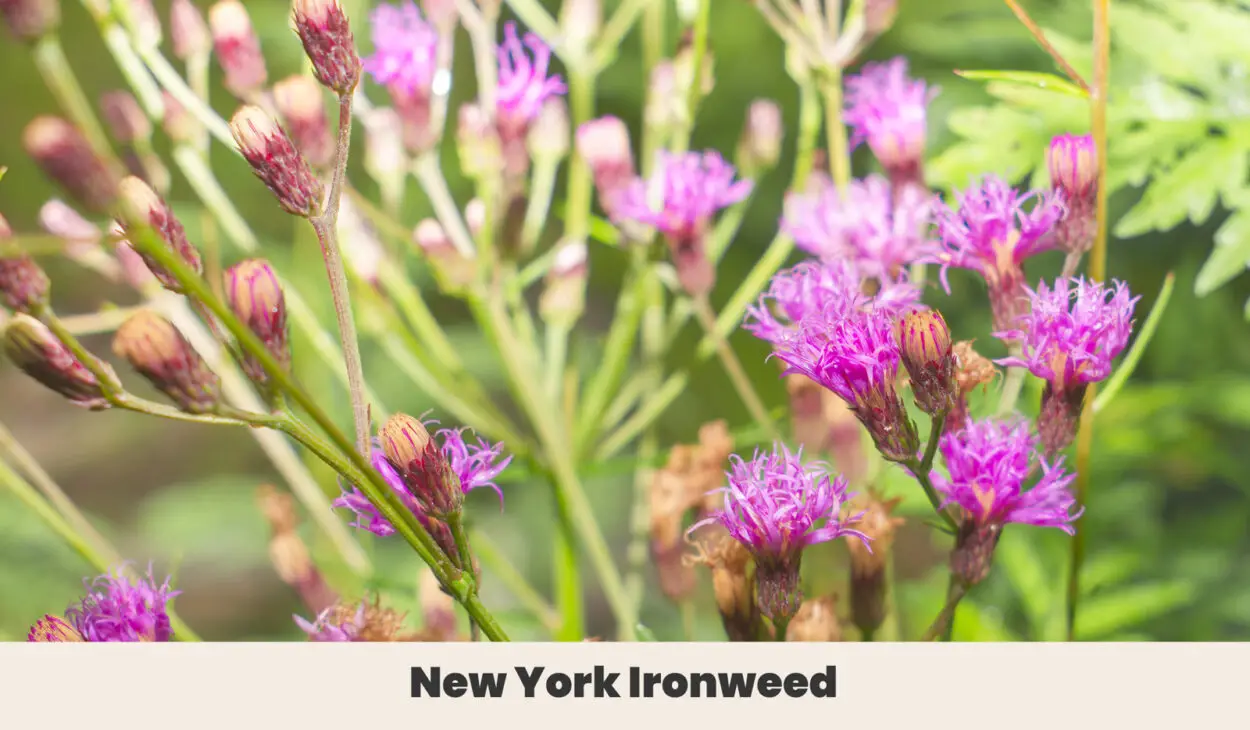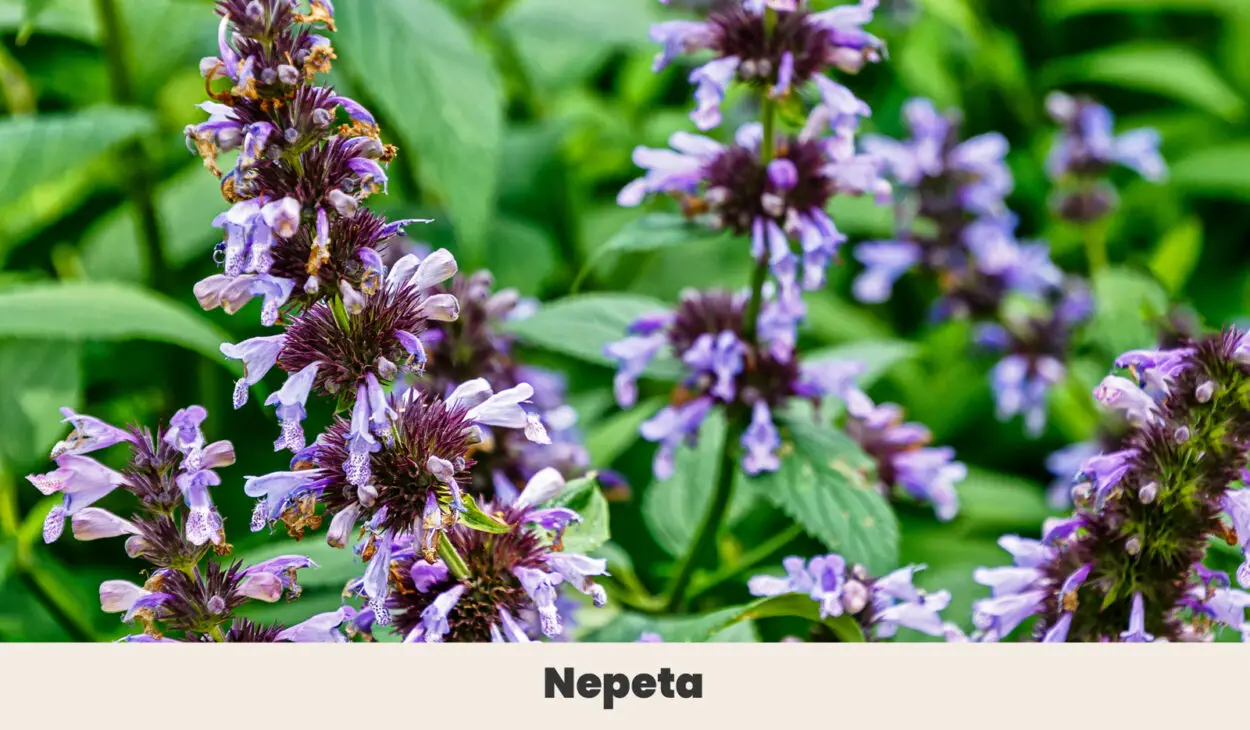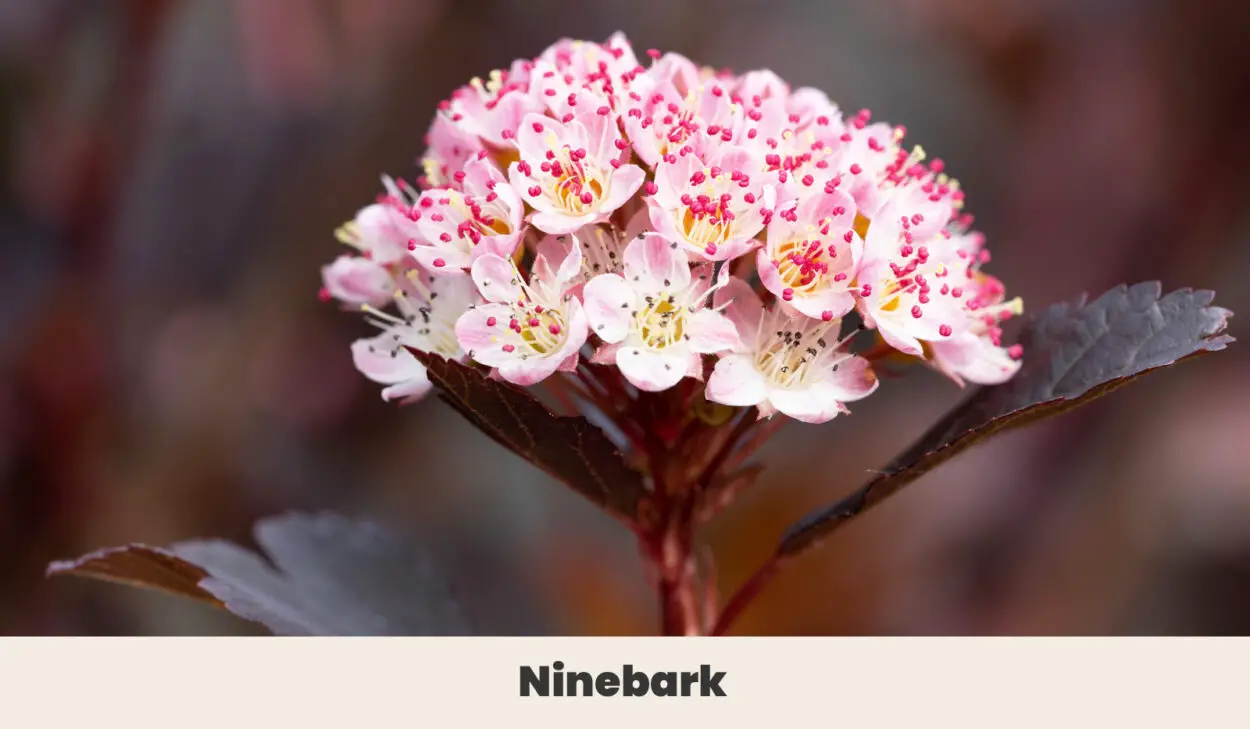12 Noteworthy Flowers That Start With N + Growing Guides

This post follows our research editorial guidelines.

Welcome to our enchanting world of nifty flowers!
In this article, we’ll navigate through some of the best-looking flowers that start with N, their traits, and historical and notable significance, I’ve even included essential growing guides for each species.

Whether you’re a seasoned gardener or simply appreciate nature’s splendor, this list of stunning flowers will inspire your floral adventures.
So, let’s dive in and learn more about these stunning flowers you can start to nurture.
Quickly Find Flowers That Start With N
1. New Guinea Impatiens (Impatiens Hawker)

New Guinea Impatiens is a tropical delight with vibrant, show-stopping flowers in many colors.
It features lush, glossy foliage and continuously blooming flowers, adding beauty to any garden.
These flowers signify patience and perseverance, reminding us to embrace challenges gracefully. They thrive in partial shade and well-drained soil. Therefore, they’re ideal for borders, containers, and hanging baskets on balconies.
| Botanical Name: | Impatiens Hawker |
| Growth Rate: | Fast |
| Native Range: | New Guinea |
| Hardiness Zones: | 10-11 |
| Soil Needs: | Moist, well-drained |
| Exposure: | Part shade to shade |
| Blooming Period: | Summer to fall |
| Water Needs: | Water regularly, keep the soil evenly moist but don’t waterlog |
2. Nodding Wakerobin (Trillium flexipes)

Nodding Wakerobin is a woodland beauty with elegant, nodding flowers that grace the forest floor.
These white perennial flowering plants have distinctive petals in various shades of white, pink, or red. They hold historical significance and symbolize purity and renewal.
Cultivate your Nodding Wakerobin in shaded areas with rich, moist soil, and watch their enchanting presence in naturalized woodland gardens or as understory plants.
| Botanical Name: | Trillium flexipes |
| Growth Rate: | Slow |
| Native Range: | Eastern North America |
| Hardiness Zones: | 4-9 |
| Soil Needs: | Moist, well-drained |
| Exposure: | Shade to part shade |
| Blooming Period: | Spring |
| Water Needs: | Water regularly, keep the soil evenly moist but don’t waterlog |
3. New York Ironweed (Vernonia noveboracensis)

New York Ironweed is a stunning native perennial with clusters of vibrant purple flowers.
It has historical significance as a medicinal plant used by Native Americans. This hardy plant thrives in full sun to part shade and well-drained soil.
It attracts pollinators and adds a bold touch to cottage gardens, wildflower meadows, or native plant landscapes.
| Botanical Name: | Vernonia noveboracensis |
| Growth Rate: | Fast |
| Native Range: | Eastern and Central North America |
| Hardiness Zones: | 5-9 |
| Soil Needs: | Moist, well-drained |
| Exposure: | Full sun to part shade |
| Blooming Period: | Late summer to fall |
| Water Needs: | Water regularly, keep the soil evenly moist but don’t waterlog |
4. Northern Lights Azelia (Rhododendron niveum)

Northern Lights Azalea is a breathtaking variety of flowering trees with pink blooms.
The historical and symbolic significance is associated with beauty and grace.
These deciduous shrubs prefer acidic soil and partial shade. Plant your Northern Lights Azalea as specimens, hedges, or foundation plants to create a dazzling display of color in spring.
| Botanical Name: | Rhododendron niveum |
| Growth Rate: | Moderate |
| Native Range: | Southeast Asia |
| Hardiness Zones: | 6-8 |
| Soil Needs: | Acidic, well-drained |
| Exposure: | Part shade to shade |
| Blooming Period: | Spring |
| Water Needs: | Water regularly, keep the soil evenly moist but don’t waterlog |
5. Nasturtiums (Tropaeolum)

Nasturtiums come in rich hues of red, orange, and yellow. They’re vibrant, versatile, and easy to grow as annuals and perennials.
You can plant Nasturtiums in beds, borders, or containers. I like to plant them next to my cucumbers to attract nearby pollinators to my growing fruit.
Lastly, nasturtiums signify victory and conquest, and their edible flowers and leaves add a peppery flavor to salads and garnishes, making them a favorite of foodies.
| Botanical Name: | Tropaeolum |
| Growth Rate: | Fast |
| Native Range: | Central and South America |
| Hardiness Zones: | 9-11 |
| Soil Needs: | Well-drained |
| Exposure: | Full sun to part shade |
| Blooming Period: | Summer to fall |
| Water Needs: | Water regularly, keep the soil evenly moist but don’t waterlog |
6. Nepeta (Nepeta cataria)

Nepeta, also known as Catnip, is a herbaceous perennial known for its fragrant leaves and small, lavender-blue flowers.
It holds historical significance as a medicinal herb and is often associated with calmness and relaxation.
Nepeta thrives in full sun and well-drained soil, attracting butterflies and cats alike. Plant it in herb gardens, borders, or containers for its aromatic and ornamental qualities.
| Botanical Name: | Nepeta cataria |
| Growth Rate: | Fast |
| Native Range: | Europe, Asia, Africa |
| Hardiness Zones: | 3-9 |
| Soil Needs: | Well-drained |
| Exposure: | Full sun to part shade |
| Blooming Period: | Summer |
| Water Needs: | Water regularly, keep the soil evenly moist but don’t waterlog |
7. Ninebark (Physocarpus spp.)

Ninebark is a versatile shrub that offers year-round interest with its attractive burgundy foliage and exfoliating bark.
It comes in various cultivars with different foliage colors, from deep burgundy to golden-yellow. Ninebark symbolizes transformation and adaptability.
These low-maintenance shrubs thrive in full sun to part shade and well-drained soil, making them perfect for hedging, foundation planting, or mixed borders.
| Botanical Name: | Physocarpus spp. |
| Growth Rate: | Moderate to fast |
| Native Range: | North America, Asia |
| Hardiness Zones: | 2-9 |
| Soil Needs: | Moist, well-drained |
| Exposure: | Full sun to part shade |
| Blooming Period: | Spring to summer |
| Water Needs: | Water regularly, keep the soil evenly moist but don’t waterlog |
8. Nigella (Nigella damascene)

Nigella, also known as Love-in-a-Mist, is a lovely annual flower with delicate, feathery foliage and unique, star-shaped flowers in shades of blue, pink, and white.
It holds historical and symbolic significance, representing love, beauty, and new beginnings. Nigella thrives in full sun and well-drained soil, adding a touch of whimsy to cottage gardens, meadow plantings, or cut flower arrangements.
| Botanical Name: | Nigella damascene |
| Growth Rate: | Fast |
| Native Range: | Southern Europe, North Africa |
| Hardiness Zones: | 2-10 |
| Soil Needs: | Well-drained |
| Exposure: | Full sun |
| Blooming Period: | Summer |
| Water Needs: | Water regularly, keep the soil evenly moist but don’t waterlog |
9. Nepal Trumpet Flower (Beaumontia grandiflora)

Nepal Trumpet Flower is a stunning vine that bears large, trumpet-shaped flowers in white or pale yellow hues. It symbolizes grace and elegance.
This vine thrives in tropical or subtropical climates, requiring full sun, partial shade, and well-drained soil.
Train it on trellises or pergolas to create a captivating focal point in garden landscapes.
| Botanical Name: | Beaumontia grandiflora |
| Growth Rate: | Fast |
| Native Range: | Himalayas, Southeast Asia |
| Hardiness Zones: | 10-12 |
| Soil Needs: | Well-drained |
| Exposure: | Full sun to part shade |
| Blooming Period: | Spring to summer |
| Water Needs: | High; water regularly and keep the soil consistently moist |
10. Nymphea (Nymphaea spp.)

Nymphea, commonly known as Water Lily, is a beautiful aquatic plant with floating leaves and vibrant white, pink, and yellow flowers.
It holds symbolic significance in various cultures, representing purity and enlightenment.
Nymphea thrives in still or slow-moving water and adds a touch of serenity to ponds, water gardens, or containers placed in water features.
| Botanical Name: | Nymphaea spp. |
| Growth Rate: | Moderate |
| Native Range: | Worldwide |
| Hardiness Zones: | Varies depending on the species |
| Soil Needs: | Rich, loamy |
| Exposure: | Full sun |
| Blooming Period: | Summer to fall |
| Water Needs: | High; water regularly and keep the soil consistently moist |
11. New England Aster (Symphyotrichum novae-angliae)

New England Aster is a native perennial known for its profusion of vibrant daisy-like flowers in shades of purple, pink, or white.
It signifies patience and elegance. These hardy plants prefer full sun and well-drained soil, attracting butterflies and bees.
Incorporate them into wildflower meadows, cottage gardens, or native plant landscapes for a burst of late-season color.
| Botanical Name: | Symphyotrichum novae-angliae |
| Growth Rate: | Fast |
| Native Range: | North America |
| Hardiness Zones: | 4-8 |
| Soil Needs: | Moist, well-drained |
| Exposure: | Full sun |
| Blooming Period: | Late summer to fall |
| Water Needs: | Water regularly, keep the soil evenly moist but don’t waterlog |
12. Nigra Hollyhock (Alcea rosea ‘Nigra’)

Nigra Hollyhock is a striking biennial or short-lived perennial with tall spires of deep burgundy flowers.
It holds historical significance and symbolizes ambition and distinction.
These hardy plants prefer full sun and well-drained soil, adding drama and vertical interest to cottage gardens, back borders, or architectural landscapes.
| Botanical Name: | Alcea rosea ‘Nigra’ |
| Growth Rate: | Moderate |
| Native Range: | Asia, Europe |
| Hardiness Zones: | 3-9 |
| Soil Needs: | Well-drained |
| Exposure: | Full sun |
| Blooming Period: | Summer |
| Water Needs: | Average |
Final Thoughts
As we conclude our journey through the realm of flowers that start with N, we hope the diversity and splendor of these awesome blossoms have inspired you.
Armed with the growing guides and care tips provided, you’re well-equipped to cultivate these botanical treasures in your garden.
Happy gardening!

